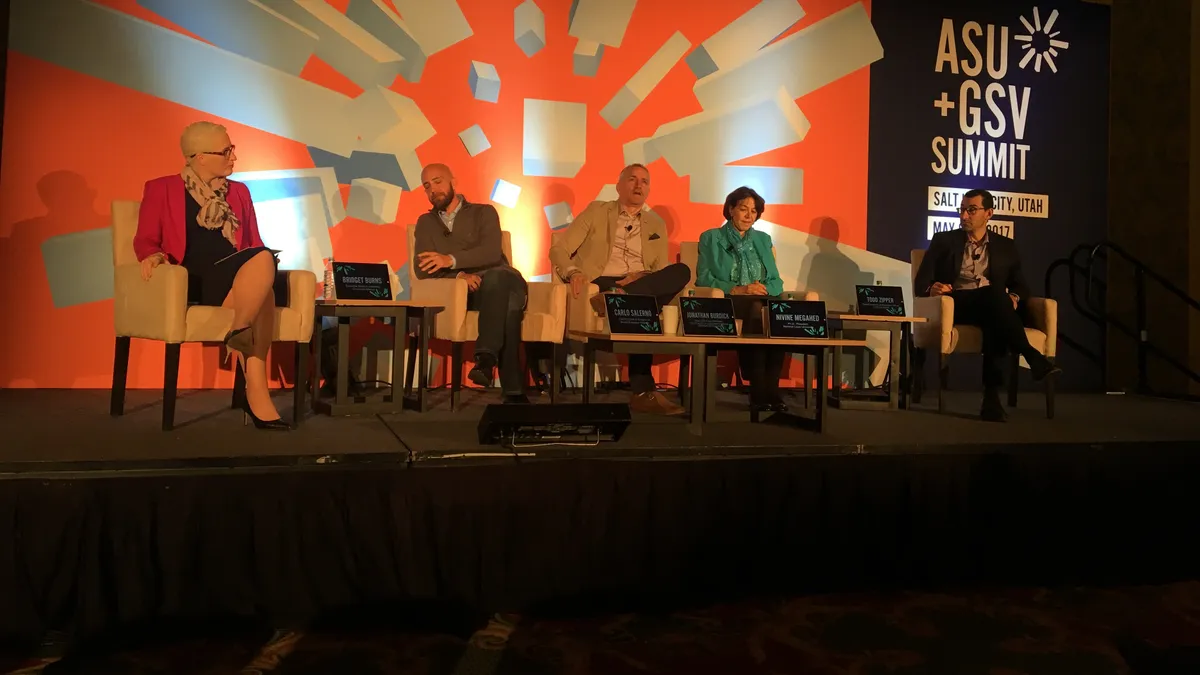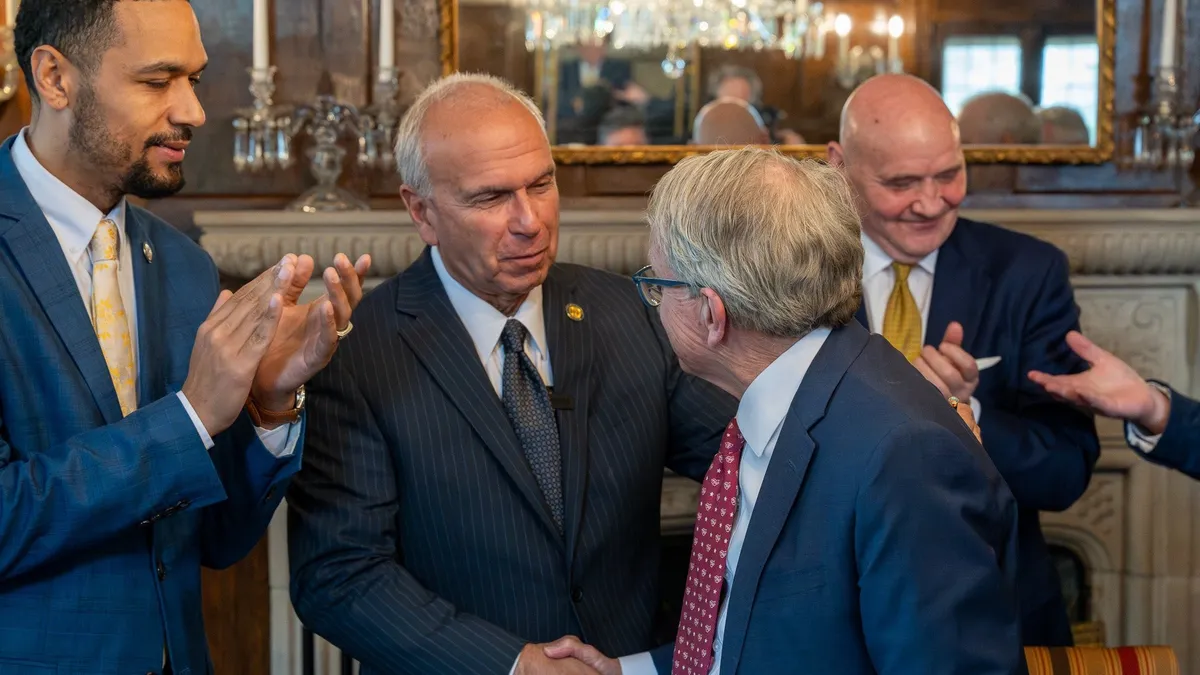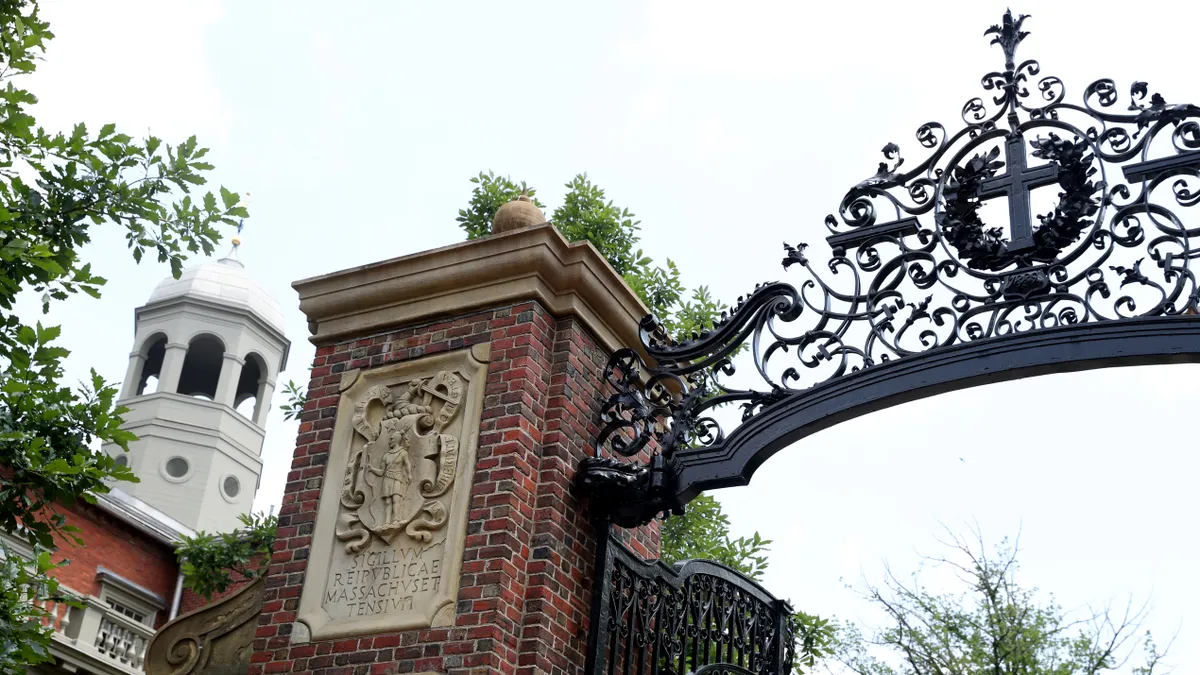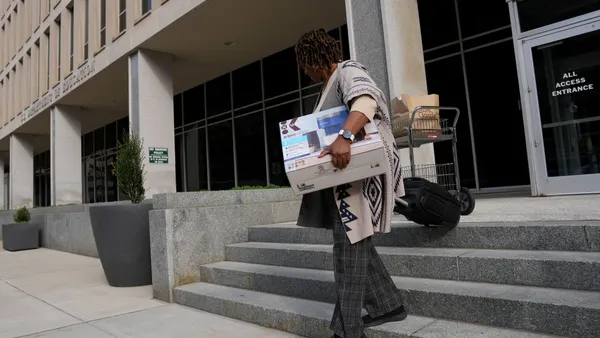In a Monday morning session at the ASU+GSV Summit in Salt Lake City, a panel of thought leaders discussed how to expand access and success, particularly among low-income, first-generation and underrepresented student populations.
Moderated by University Innovation Alliance Executive Director Bridget Burns, "Building On-Ramps to Higher Ed Success" saw Strada Education Network Vice President of Analytics Carlo Salerno, University of Rochester Dean of College Admission and Vice Provost for Enrollment Initiatives Jonathan Burdick, National Louis University President Nivine Megahed, and Learning House President and CEO Todd Zipper tackle issues ranging from who should take the blame for student failures to the rising cost of tuition. Below are three key takeaways.
Is failure the student's fault or the institution's?
Burns asked whose fault it is if a student is admitted and then they drop out, citing stats that say about half of students are being failed by their institutions. Megahed and Salerno each responded that there is responsibility on both sides. For as much talk as there is of making sure students are "college-ready," Megahed said it's important, too, that colleges and universities think of themselves as being "student-ready."
"If an institution is 'student-ready,' you can really try to address a lot of the things that happen that end up being a result of the institution not supporting the student appropriately," Megahed said. "I think in some situations, there's just a lot of life circumstances you cannot overcome. But my point is, as an institution, you can only control what you can control. If you control 'student-ready' as an institution, and you're doing what you can to support this population, you're gonna get a lot more students through than you're currently getting through."
For Salerno, it all comes down to the responsibility of any service provider to use the resources at their disposal — analytics in higher ed, for example — to ensure customers' needs are served.
"We can talk about 'failing' institutions or are institutions failing their students, but we have to ask ourselves some basic fundamental questions," he said. "For example, what college says, 'You know, I want to enroll 2,000 students, and I'm going to let 50% of them drop out?'"
Among the resulting issues, he said that institution then has to consider that 50% will likely leave the institution, not contribute to positive public perception of the institution, and likely would have student loans they then would not be able to pay back.
Ultimately, colleges and universities should use data at their disposal to solve immediately identifiable problems while working to understand other issues that students from underserved populations might face. One example that has been pointed out before is an unexpected expense such as a sudden car repair, which can derail the path to completion as the student has to choose between working more hours to make ends meet, or continuing their education.
This sort of sentiment was echoed when Salerno noted that it's difficult to try to force institutions into accountability for achievement when people have a variety of factors that make it hard for them to be pushed through a system, adding that he could think of "100 reasons" why a person might not succeed that has nothing to do with the institution.
How do we deal with students who already have some college?
There are a number of issues that come up in discussions around transfer students or dropouts who return to college at other institutions. One recurring point of concern, particularly at community colleges: When a student begins at one school but completes their degree at another, their education is often still counted as incomplete at the initial school.
Another point of concern is that the credits they've already gained at one institution, whether they're transferring or returning to school some time after dropping out, don't always count at the new institution, setting them back and costing them more.
Zipper said that solving access and student success would require dealing with these gaps in accurate measurement. "That is an issue that, almost every time we go to a university, they're not prepared at all to deal with transfers from other institutions or even dropouts. And that's the bulk of the college market today."
He said that while institutions are looking at lots of data, it's a matter of whether they're looking at the right data. It's likely that this issue will persist until a better commitment to tracking completion data across institutions and more clarity around transfer credits is made. The latter could potentially be solved via competency-based methods that evaluate mastery of a topic rather than completion of a specific curriculum.
How do we solve high tuition?
"I think we can all agree that students want lower tuition," Zipper said, noting that it’s especially an issue for students from underserved populations who sometimes have to drop out as a result. The cost of college is a top issue when it comes to solving both access and success, particularly for low-income and first-generation students. Calling it a "runaway issue for the last several decades," Zipper said there are a lot of tech-based solutions working toward solving it including MOOCs, competency-based programs and alternative credentialing.
As the resulting conversation on the panel demonstrated, talk of tuition often quickly circles back around to outcomes and whether they can be guaranteed. One factor that outcome discussions fail to take into account is that not everyone goes into certain fields or measures career success based on their resulting income.
As Salerno noted, “completion with a purpose” would be nice in a planned economy, but that's not what the U.S. has. People choose the degrees they want, and fewer people enroll in high-demand, high-paying fields. Zipper also disagreed with the notion of a planned economy based on the federal government offering additional money for certain fields of study.
But ultimately, solving the tuition problem will still require greater engagement of policymakers at the state and federal level to return funding to sustainable levels. And for many institutions, it could also require more innovative thought around programming, such as what Paul Quinn College President Michael Sorrell has done at his institution.






















